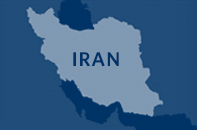Labor Discusses Wealth Gap disparities Among African Americans
December 09, 2011
01:38 PM EDT
On November 18, I participated in the inaugural event for the Joint Center for Political and Economic Studies’ launch of its Institute on Civic Engagement and Governance. I had the opportunity to participate on a plenary panel to discuss the challenges and effects of inequality on public policy with Professor William Darity, from Duke University. I reflected on President Obama’s unique record in handling record levels of income inequality.
Data from 2010 on income and poverty from the US Census Bureau highlights that the bottom 20 percent of households in America earn only 3.3 percent of total income in the US. The next quintile, the lower-middle income, earns 8.5 percent of the total, and the middle quintile, the mathematical middle-class, earns 14.6 percent. This means that the poor, and the middle class and lower-middle class earn a combined 26.4 percent of US income. That is, the bottom six-in-ten of America gets less than three-in-ten of the income. This results in a disadvantage for the bottom sixty percent and also develops an economic minority.
It is a challenge to structure policy that addresses the loss of income that Americans have sustained because of foreclosures and home losses, and pension and retirement fund losses that reflects the political majority, not the economic majority. Yet, by balancing tax cuts with income supports, the American Recovery and Revitalization Act that President Obama put in place was very successful in getting the benefits to follow the American people, instead of following dollars. In April 2010 in the President’s Council of Economic Advisor’s Third Quarterly Report on ARRA, they were able to show that between the Making Work Pay tax credit, changes in unemployment insurance, food assistance and additional help to senior citizens, that the poorest 20 percent of American families got 12.7 percent of the benefits, and the next poorest 20 percent, those with lower-middle income, got 18.7 percent of the benefits.
Unemployment rates are unacceptably high and the distribution of unemployment levels is unequal. Some communities have much higher unemployment rates than others. For instance, there have been record level highs in unemployment for African Americans and minorities. Some people will get jobs quickly as aggregate demand is restored, and companies look to hire back to their previous employment levels. But, others will be missed. So, the AJA balances efforts at cutting taxes and extending unemployment insurance benefits that will help accelerate the restoration of aggregate demand with more direct measures to get people back to work.
The AJA proposes to continue our investments in building the American future with targeted infrastructure projects, especially modernizing American schools. The AJA targets a wide range of groups including, public employees, and communities that have high unemployment and high poverty; teachers, low-income workers, minorities and youth. Subsidized employment for these cohorts is cost effective in getting them back on the job.
So, it is very timely that the Joint Center adds to its tools to address America’s problems. And, it is good to know how President Obama’s Administration is carefully balancing its policies. Now is the time we all need to work together to pull America together, creating policies that do not just affect a few, but carefully designed to reach and benefit all Americans.





